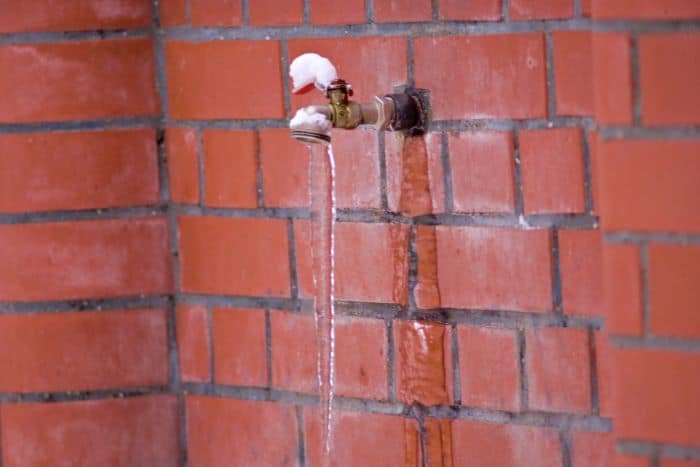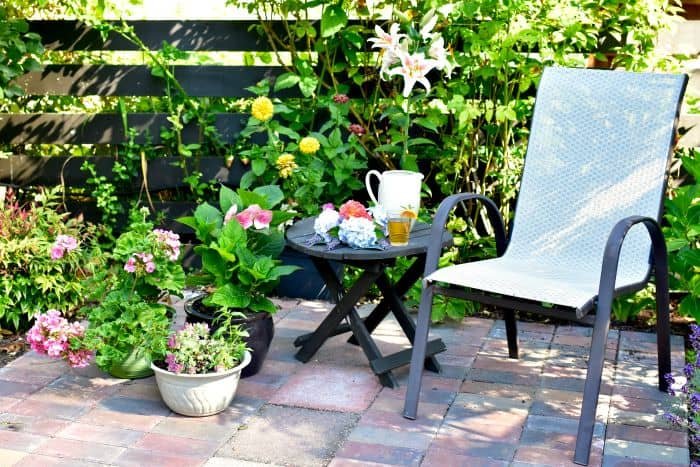Hiding Outdoor Cable Wires: Step-by-Step Guide for a Neater Look
Cables get messy quickly, and even if they run in straight, neat lines, they can still be an eyesore. Cable wires in the outdoors can be an even trickier challenge than in the house, as they are more susceptible to wear and tear, and there are fewer clever places to hide them.
Luckily there are aisles of your local Lowes dedicated to all things having to do with installing electric cables and a variety of tips and tricks for installing them depending on your needs. So whether you need to run power to your new fountain or install a security camera, here are some tips on where to begin.

Table of Contents
Easiest Ways to Hide Outdoor Cable Wires
If you do not have much cord to run or are installing cables directly on your home’s outside surface, you will have simpler options for hiding your outdoor cable wires. You can hide your cables along outdoor walls by matching them or their covers to the wall color or simply run them behind the walls themselves.
Even if your wires are covered, don’t let your guard down by using any old wire or extension cord. Make sure that whatever wires you are using are waterproof. Water will find its way into any crevice or crack, and taking this simple step will ensure peace of mind and fewer malfunctions or short circuits down the line.
Painting Your Cable Wires or Cable Raceway
If your cable wires are going to be attached to the outside of your home, consider painting them or the tubing they are housed in to match the exterior color. You can take a chip of your house’s paint and match it at any paint store for the most effective coverage.
In fact, painting your cables will not only help them to blend in but also helps to prevent UV ray damage.
If you like the idea of painting your wires, acquire the following: a sponge, outdoor spray paint primer, outdoor paint to match, a refillable paint spray gun. Follow these steps in order:
- To start, scrub the length of the wiring lightly with a sponge. This will enable the paint to stick better and not run as much.
- Coat the length of your cable with the primer spray.
- If using canned paint, mix 1/10 part of water with 9/10 part paint. Put mixture into the spray gun and coat your cable wire.
- Let the paint dry, and then install!
Also, note that some cable raceways are pre-treated for exposure to chemicals or UV rays in addition to being waterproof. If you can, try to purchase these in a color most similar to your house’s to save a bit of labor.
In our case, we’re adding a good sized outdoor kitchen area and needed electricity run to it. We also added a ceiling fan and need to hide the exposed wires.
Cable Wire Ground Protector
If you do not care so much about your cable wires’ aesthetics and simply want to protect them from being run over or torn, purchase a floor cable raceway. These are made of plastic and come in various shapes and lengths.
Some raceways are thinner and snake along the length of the cord. Others are more solid and stable, creating a type of roof that a car could drive over. Choose according to the level of versatility or protection your cable wires need.
Cable Boxes
If you have excessive wires piling up and creating an eyesore, consider purchasing a cable box to house the slack.
You can buy a simple plastic and waterproof box or drill a box or cable wire housing receptacle into the side of your home. This box can also match the color of your house to be better hidden.
Hiding Cable Wires On Your House
If your electric device is going to be attached to your home, you can treat the cables in much the same way as you would indoors. Look for the following house designs that can be used to your benefit:
Look out for these features:
- Roof overhangs
- Siding panels
- Deck
- Walls
With roof overhangs, you can tuck the cable wires underneath, stapling them into the side of the house, though it is highly recommended that you still use a cable tube or wire guard for added protection. Hiding your cable wires under the lip of a house’s side panel will be much the same.
You can also drill holes into your walls to run cables behind or simply run your cable wires along the bottom or vertical edges. This electrical practice is particularly useful for security cameras that will only need a small hole drilled into the siding so that you can then run the power and ethernet cords into the attic or house.
Hiding Cables in Your Yard
If you are installing a pond, fountain, lighting, or any other electric device in your yard, you will, of course, need longer cable wires and thus more coverage. There is really only one way to go about hiding them: bury your cable wires underground.
Consider the soil composition of where you will need to dig and how much cable you need to run. If you have incredibly tough ground to run wire through, you may only need to dig 6 inches deep. The lighter and less dense the soil, the farther down you will be able to dig. Plus, the deeper you bury your cable wires, the cheaper the conduit.
Choosing Cable Wire Conduits for Digging Underground
To install cable wires underground, you will need to choose the appropriate conduit. Whatever the case, both conduit and cable must be waterproof. The following table can act as a starter guide.
| Cable Depth | 6 inches | 12 – 24 inches |
| Conduit Material | Rigid Metal Conduit – Galvanized Steel | PVC Pipe |
Steel is used for shallower depths to prevent the conduit and wire from melting in the event of a fire or explosion, as the damage from each can reach below ground.
Depending on your type of cable and the depth, you may not need to use PVC pipe past 6 inches. Consult an expert or look more into the kind of coating your wires have, such as:
- Thermoplastic High Heat-resistant Nylon-coated (THHN)
- Ground-Fault Circuit Interrupter protection (GFCI)
Hiding Temporary Cables
Since you probably do not want to go the extra distance of burying your wires if they will only be there for a few months, consider some simpler techniques for hiding them, both for protection and aesthetics.
While it might not seem as important to hide temporary cables, it can be a good idea, especially if you are looking to make things appear as aesthetically pleasing as possible.
Match Your Cable Colors to the Surrounding Area or Use a Cable Wire Ground Protector
Extension cords and cables, if non-specific, come in a variety of colors, which are usually designed with the idea of “blending in.” The simplest way to reduce cable wire visibility is to think ahead about where you will be placing your wires. Here is an easy table to follow:
| Surrounding Area | Grass | White Walls/Trim | Dirt/Garden/Shade |
| Cable Color | Green | White | Brown |
When blending your cables in with the surrounding area, the one thing to consider is whether you will be doing any yard work in the interim period. Do not put cable wires if there is a chance they may end up tangled in your weed-whacker or shredded by your lawnmower.
As for a cable wire ground protector, if your aim is simply to hide your cables from damage for a shorter time, consider purchasing a cable runway for the ground in areas of heavy foot or vehicle traffic.
Hiding More Heavy-Duty Cable Wires
If you are looking to install more industrial-grade wiring, there will be more considerations. Consider the following for hiding more substantial amounts of cable wires outdoors:
- Cable weight
- Cable length
- Cable strength
If you are running heavier or more numerous cables alongside an outdoor structure, you will need a more heavy-duty cable runway system, typically made of steel. You can use steel brackets if your wires are sufficiently protected from corrosive damage, but more fragile types such as fiber optics cables will need the added steel tubing protection.
You maybe looking to start a new project, but need some ideas. Well you’re in luck, as we have some articles you maybe interested it looking over! Learn how to give yourself more storage for your backyard. We have plenty ideas if you’re wanting to go with a grass free yard, as well as some deck to patio transition idea.






